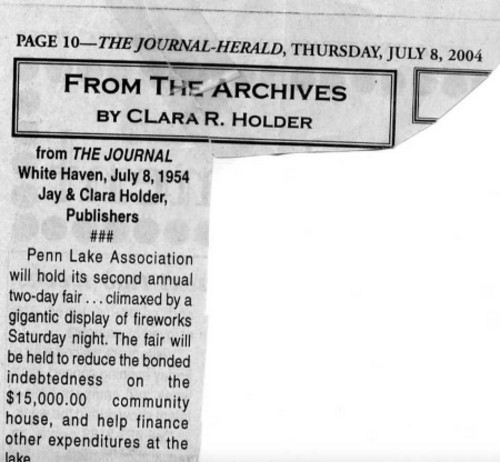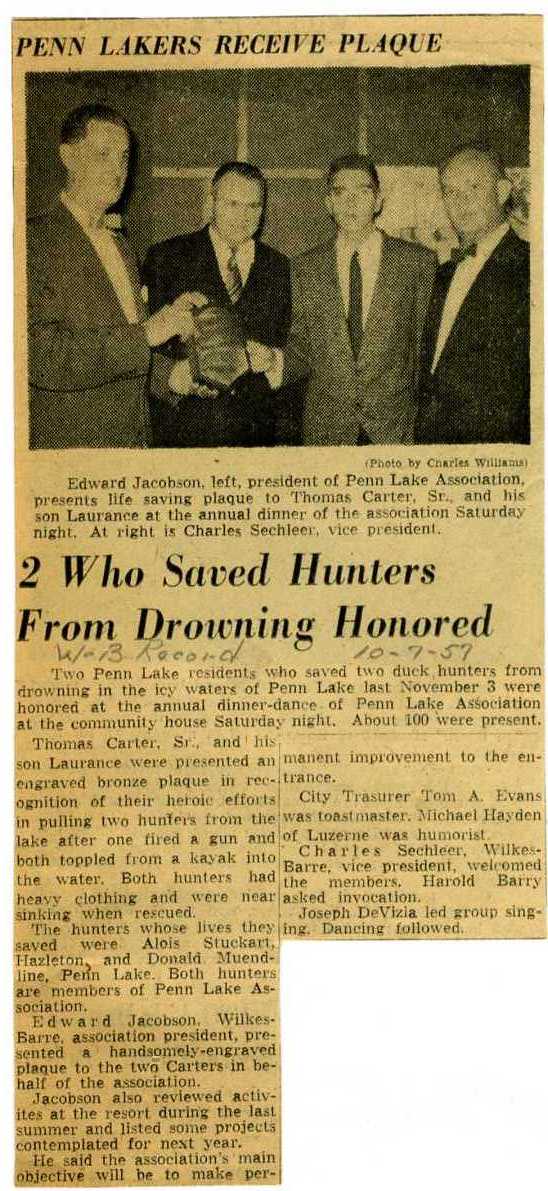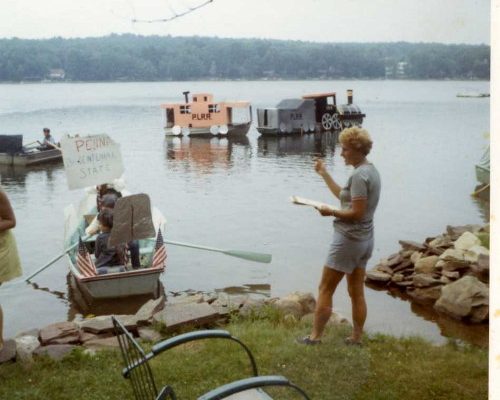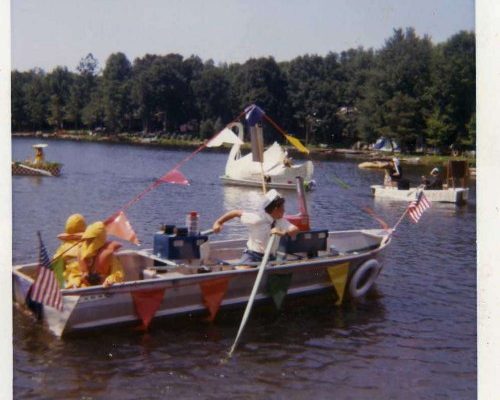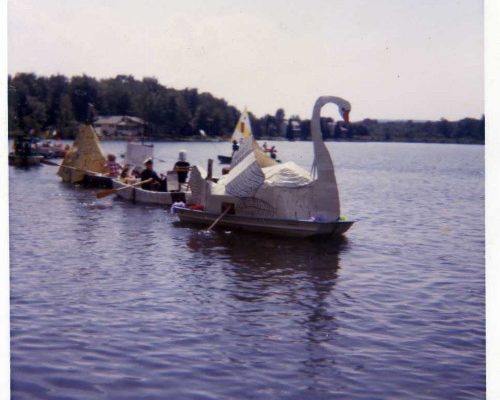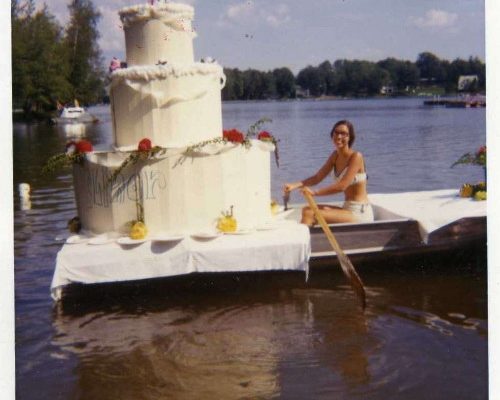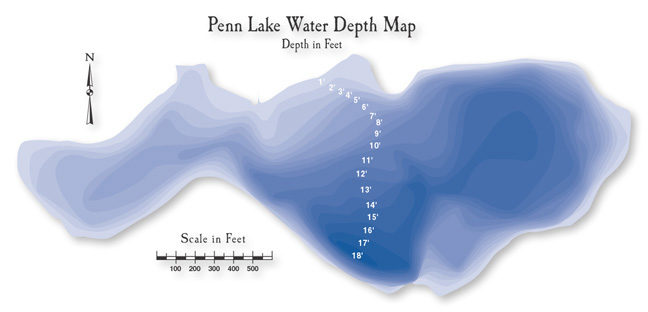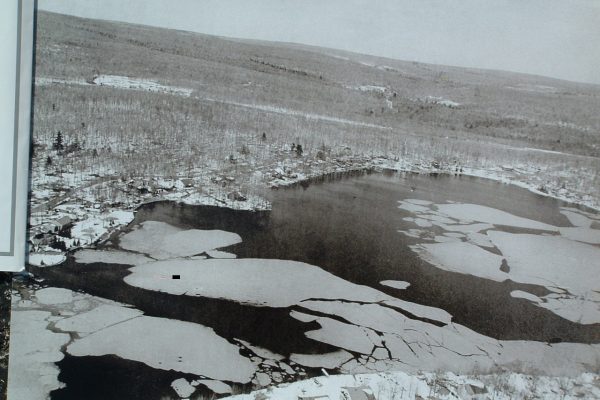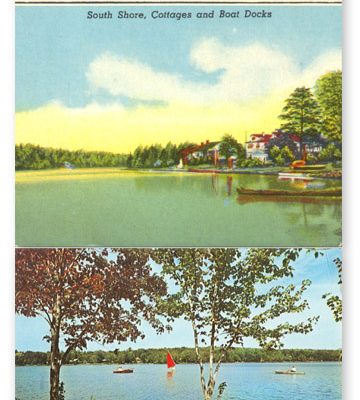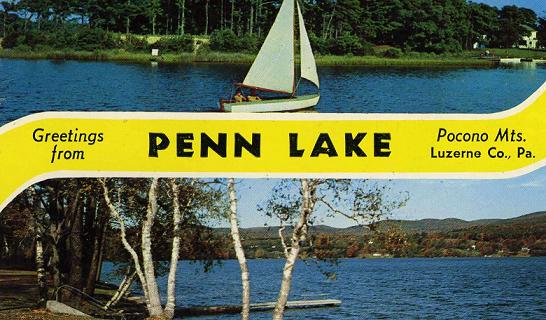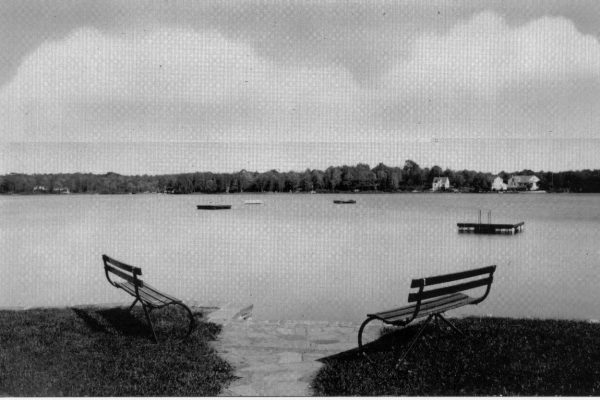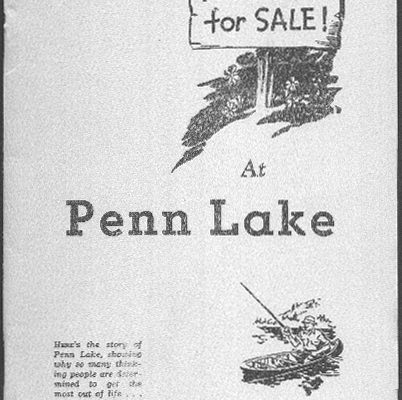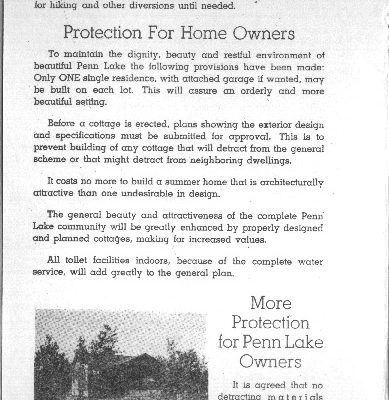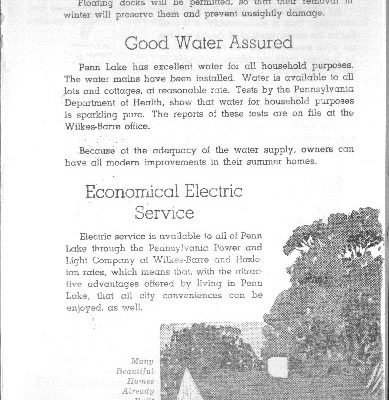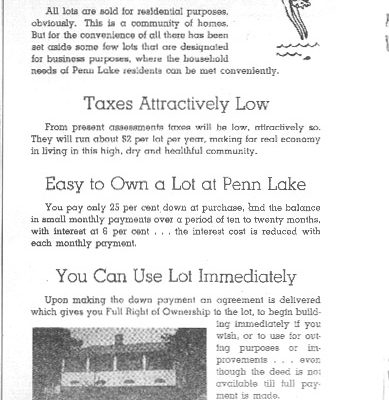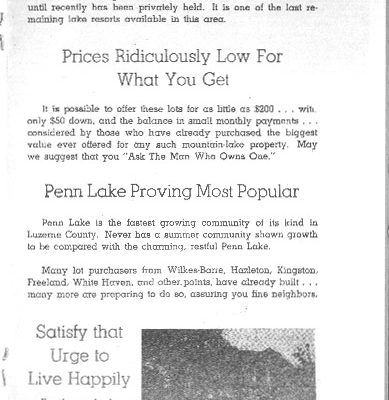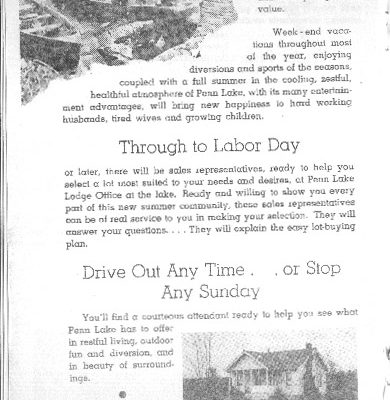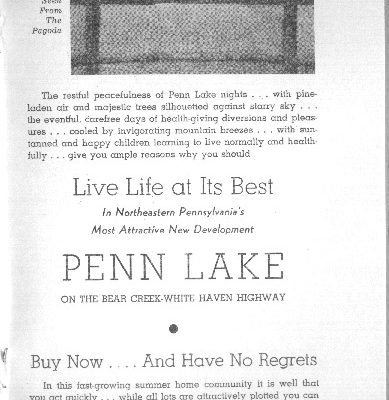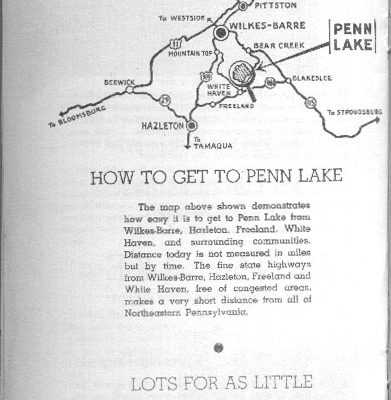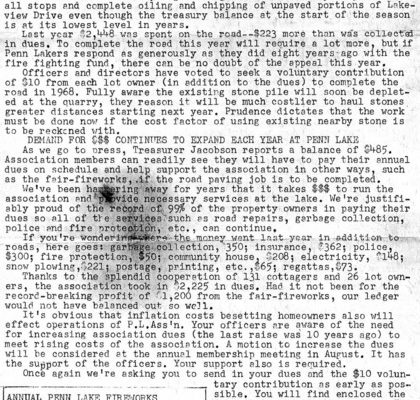Penn Lake is named after William Penn. The area which was to become Penn Lake was part of the virgin forest around the White Haven / Bear Creek area. The Penn Lake property was part of the Albert Lewis Estate. Albert Lewis’ roots were in the lumber business. Lewis’ father and uncle were lumbermen who came to PA from Maine.
1860’s:
During the early 1860’s, Albert worked for the Lehigh Valley Railroad. He was young, ambitious and a favored employee of Asa Packer. Packer was the Railroad Magnet whose mansion can still be toured in the town of Jim Thorpe. Lewis’ relationship with Packer and others from the railroad would later help him develop his ice interests in the Bear Creek area.
Lehigh River Ice Industry:
The development of the “ice box”, and increased urbanization and consumer demand, created a new, high growth, business venture…the Ice business. White Haven was considered the hub of the Ice Industry due to it’s plentiful lakes, favorable winter climate, and railroad logistics. Rivers, and then lakes, were used to freeze water into ice, which was then cut and shipped to New York and New Jersey for profit.
1880’s:
Starting in 1880 Albert Lewis formed the Mountain Springs and Bear Creek Ice Companies in Luzerne County. The Bear Creek Ice Company clears the land and dams Wright Creek which creates Penn Lake. A minimum of 22 years of ice cutting generated a large amount of income for Lewis and his partners.
1911 – 1912:
Bear Creek Company shipped 8,000 tons of ice from Penn Lake in the 1911-12 season. The Ice House at Penn Lake was located on what is now the Yeager’s property. The rail line was located on the top of the dam and the ice was loaded onto the cars from the Ice House.
1915:
Severe weather conditions, including a hurricane in 1915 hit the area and destroyed the ice plants. Coupled with these natural disasters was the development of ammonia based cooling and refrigeration which allowed ice to be manufactured within the cities and closer to the customers.
1917:
The Luzerne County ice plants were dismantled in October 1917 ending the ice industry at Penn Lake and surrounding areas.
References:
adapted from Albert Lewis: The Bear Creek Lumber and Ice King
by F. Charles Petrillo- 1998 Penn Lake is named after William Penn. The area which was to become Penn Lake was part of the virgin forest around the White Haven / Bear Creek area. The Penn Lake property was part of the Albert Lewis Estate. Albert Lewis’ roots were in the lumber business. Lewis’ father and uncle were lumbermen who came to PA from Maine.
1860’s:
During the early 1860’s, Albert worked for the Lehigh Valley Railroad. He was young, ambitious and a favored employee of Asa Packer. Packer was the Railroad Magnet whose mansion can still be toured in the town of Jim Thorpe. Lewis’ relationship with Packer and others from the railroad would later help him develop his ice interests in the Bear Creek area.
Lehigh River Ice Industry:
The development of the “ice box”, and increased urbanization and consumer demand, created a new, high growth, business venture…the Ice business. White Haven was considered the hub of the Ice Industry due to it’s plentiful lakes, favorable winter climate, and railroad logistics. Rivers, and then lakes, were used to freeze water into ice, which was then cut and shipped to New York and New Jersey for profit.
1880’s:
Starting in 1880 Albert Lewis formed the Mountain Springs and Bear Creek Ice Companies in Luzerne County. The Bear Creek Ice Company clears the land and dams Wright Creek which creates Penn Lake. A minimum of 22 years of ice cutting generated a large amount of income for Lewis and his partners.
1911 – 1912:
Bear Creek Company shipped 8,000 tons of ice from Penn Lake in the 1911-12 season. The Ice House at Penn Lake was located on what is now the Yeager’s property. The rail line was located on the top of the dam and the ice was loaded onto the cars from the Ice House.
1915:
Severe weather conditions, including a hurricane in 1915 hit the area and destroyed the ice plants. Coupled with these natural disasters was the development of ammonia based cooling and refrigeration which allowed ice to be manufactured within the cities and closer to the customers.
1917:
The Luzerne County ice plants were dismantled in October 1917 ending the ice industry at Penn Lake and surrounding areas.
References:
adapted from Albert Lewis:The Bear Creek Lumber and Ice King
by F. Charles Petrillo- 1998
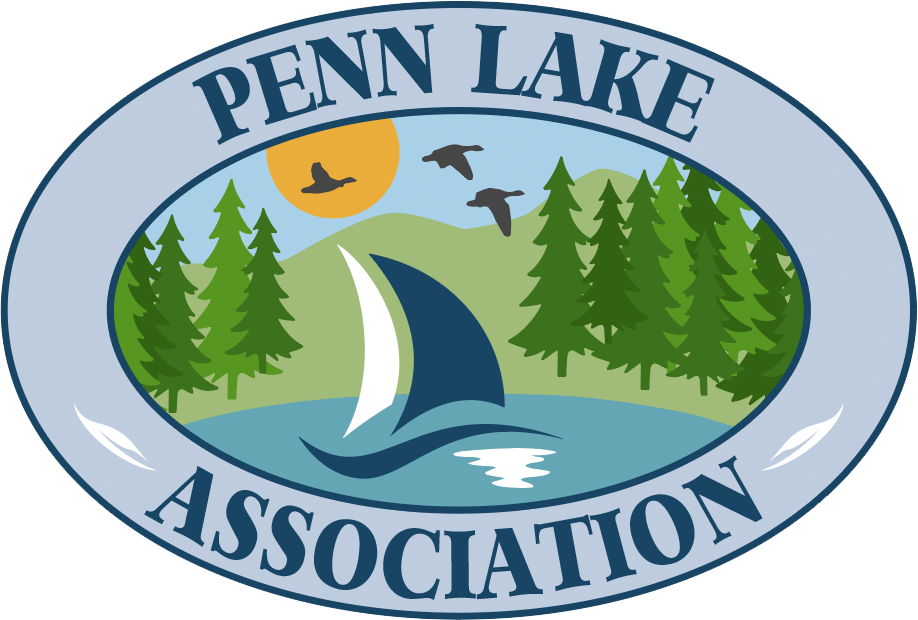
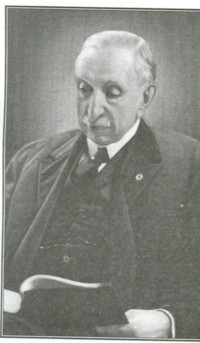
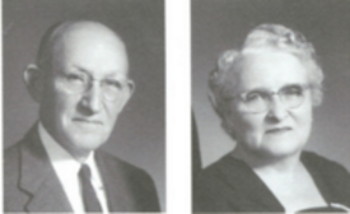
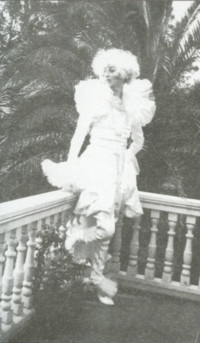
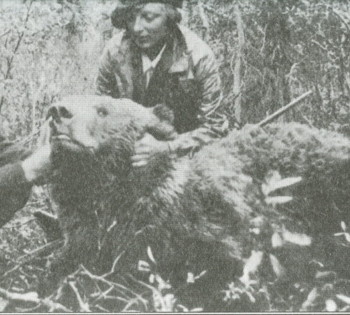
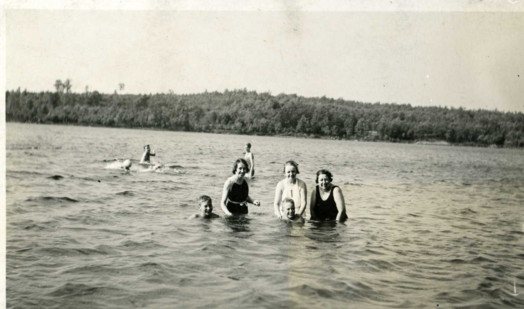

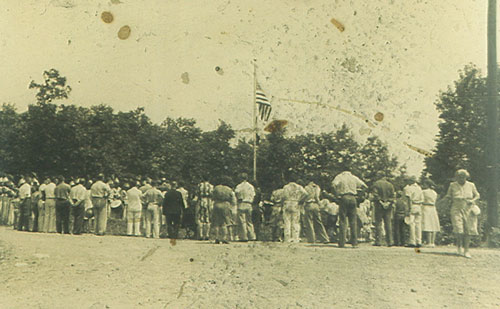
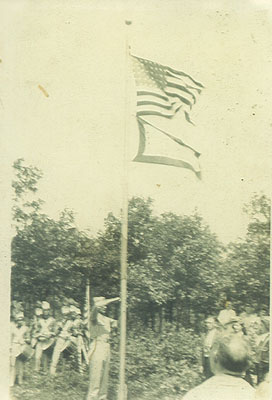
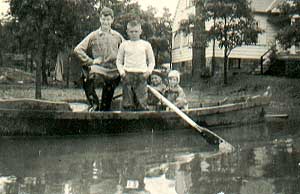

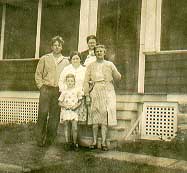
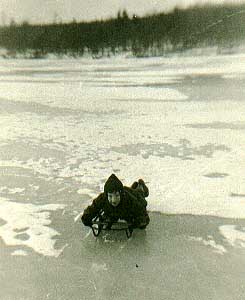
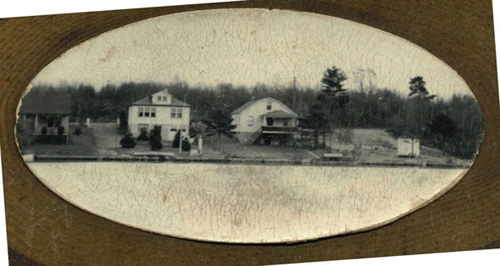
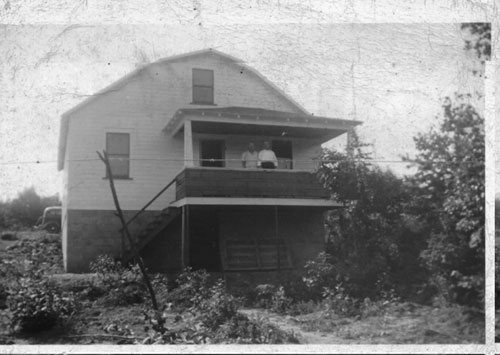
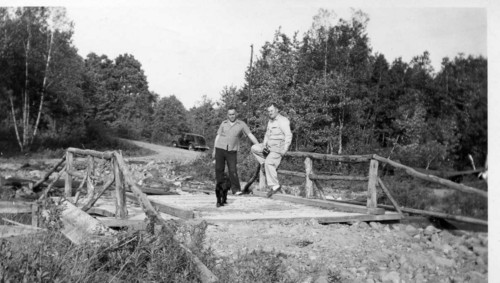
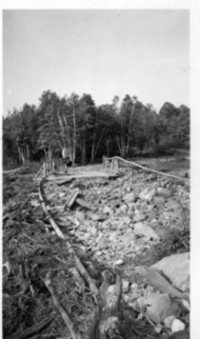
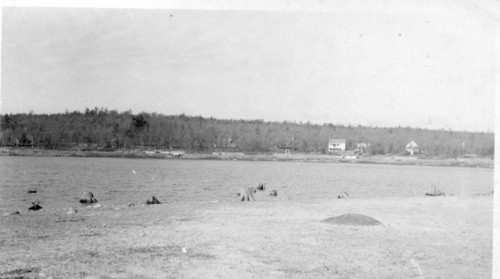 1954 article from The Journal:
1954 article from The Journal: